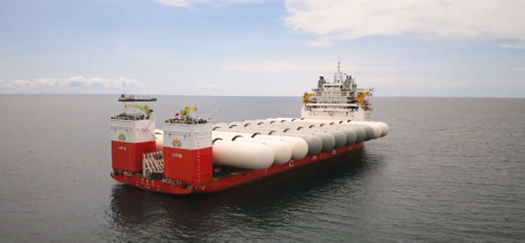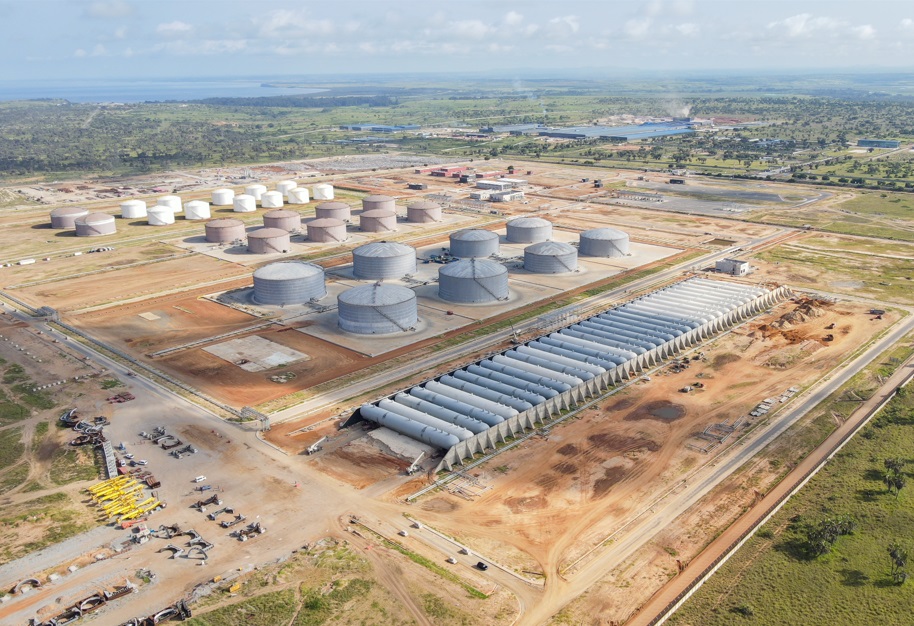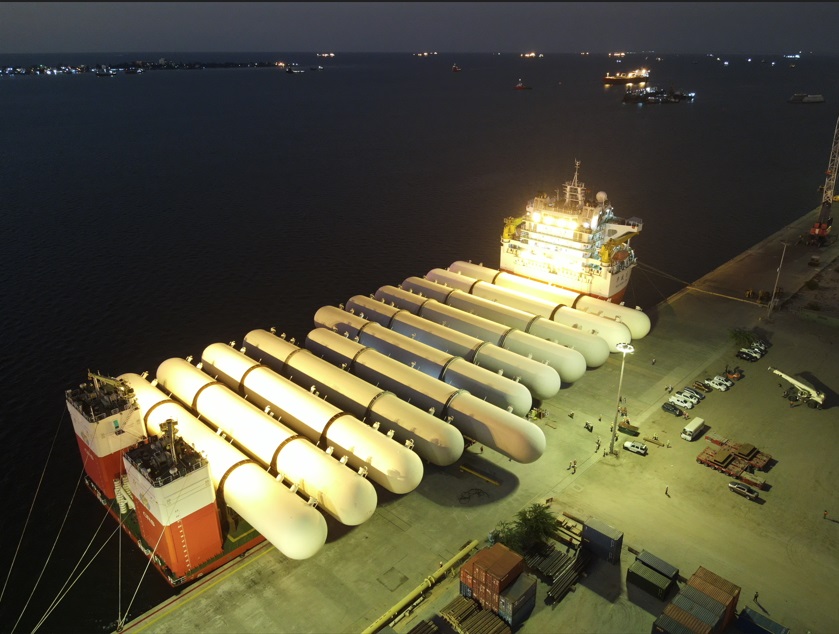We know that balancing the cost and value of corporate health plans is currently one of the top priorities...
Innovation to mitigate risks in Angolan project
DATE: 05/03/2024
Learn about the challenges and the unprecedented solution implemented to deliver part of the infrastructure for the Barra do Dande Ocean Terminal, one of Angola’s main developments

The challenging project involving the construction, delivery and installation of 34 pressure vessels, known as “bullets”, for storing Liquefied Petroleum Gas (LPG) at the Barra do Dande Ocean Terminal (TOBD) in Angola, was completed at the end of 2023 with great success and many stories to tell.
The complex operation was led by OEC and its subsidiary Tenenge, which specializes in major industrial works, in support of the state-owned oil company Sonangol, which is responsible for the Barra do Dande Ocean Terminal.
“This is a structural undertaking for Angola’s economy and energy security. This type of project is a specialty of OEC and required great dedication from our team of engineers, our partners and all the other teams involved. A complex job that was completed with great success and recognition,” said Alex Bastos, OEC’s contracts director in Angola. The bullets are an essential part of the infrastructure planned by Sonangol for the terminal and their installation involved a totally innovative arrangement: from the construction method to the delivery logistics, with obstacles that were overcome one by one in a job that took around two years to complete.
“Horiens has been supporting us in this challenge from the outset, bringing its experience in mapping, assessing and transferring major risks to the insurance market, a sensitive stage of the project,” explains Diogo Silva, OEC’s Production Manager in Angola.
Arlecio Rodrigues, Risk and Insurance Manager at Horiens and responsible for the Infrastructure insurance programs in the African market, says that the constant dialogue with the team to understand all the engineering implemented for the transport of the parts was one of the preponderant factors for the transfer and acceptance of the risk by the insurance market.
“Due to the unprecedented nature of this project, great care was taken to map and mitigate the risks, as well as communicating this entire strategy to the insurance market,” explains Arlecio Rodrigues. “Promoting a qualified underwriting process, i.e. mapping and assessing the risks involved in an insurance policy, is one of the differentials of our way of working. Insurers need to have accurate information about the scenario in order to accept the risk efficiently,” he adds.
Breaking new ground
The first and one of the biggest challenges was to define how the bullets would be built, taking into account time and cost efficiency, as well as guaranteeing the performance of the equipment in the operational phase. A task that required many, many hours of feasibility analysis.
The bullets are cylindrical, horizontal vessels 72m long (the equivalent of a 25-storey building!), 8.0m in diameter and approximately 420 tons of steel. These parts are difficult to make on site, as they require strict quality control and specialized labor.
After a series of studies, the chosen path was to have the bullets built off-site by Chinese manufacturers who met the project’s requirements.
According to Débora Coting Braga Rosa, Tenenge’s Engineering and Construction Methods manager, the decision to produce the equipment in China allowed the project’s delivery time to be reduced by six months. “While on the one hand this gave us certainty in terms of the timeframe and quality of the parts manufactured, on the other hand transporting and installing these structures required meticulous planning and logistics,” he points out.
A major logistics operation
The decision was made, but new challenges had to be overcome, now in relation to the logistics operation: what would be the best way to transport the 34 huge bullets from China to the Barra do Dande Ocean Terminal in Angola?
Semi-submersible vessels, widely used to transport drilling rigs, were the choice for this challenge, eliminating difficulties inherent in land transportation, which would significantly increase the risks of this stage.
“We challenged ourselves to think outside the box in order to deliver an effective solution for the client and this involved using semi-submersible vessels with large overhangs, i.e. with part of the equipment protruding from the transport vessel. It’s an innovative format, not previously used in this volume, distance and complexity,” says Débora.
“To do this, we sought all the support we could. Specialist consultant Jacques Raigorodsky played a key role in engineering the entire operation. When it came to ascertaining the quality of the process, the support of excellent offshore companies gave us confidence. In identifying and transferring risks to the insurance market, Horiens’ participation helped ensure the project’s efficiency and competitiveness. We had the sum of many forces,” he adds.
In all, to arrive at a viable route, around 40 ships and various loading arrangements were studied – quite a mission!
Mitigated risks and dialog with the insurance market
After all this study, the solution defined for transportation considered three journeys with the bullets positioned transversely. For everything to go smoothly, identifying the risks and mitigating them was essential.
To begin with, the maritime transport of the bullets was certified and monitored by DNV, a British consultancy specializing in the maritime industry. “This endorsement was of paramount importance in the dialog with the insurance market, as it conveyed confidence that the process was well-founded,” recalls Arlecio, from Horiens.
Other risks to be mitigated involved choosing the type of ship that would carry out the transportation, mapping out the best route, the likelihood of waves hitting the cargo and the need to guarantee the stability of the equipment on deck without using welded elements in the bullets.
“All these scenarios have been mapped out and addressed very responsibly. We communicated this precisely to the market, which contributed to our success and good negotiating conditions in the insurance program,” explains Arlecio.
At a certain point in the project, an unforeseen event meant that the ships had to adjust their route. “The situation implied a change in the risk scenario, and we already had the insurance in place. This is natural in challenges of this magnitude, we need to be prepared,” Arlecio said. “Knowing the business in depth allowed us to act quickly and in a qualified manner to achieve a balanced solution with the insurance market, with minimal impact on the project’s cash flow,” he adds.
Project finalized
In December 2023, the bullets were delivered and installed at the Barra do Dande Ocean Terminal, a moment eagerly awaited not only by the professionals of all the companies dedicated to this mission, but also by the market.
With work scheduled for completion in the second half of 2024, the terminal is designed to become an important regional and international hub for the production, storage and distribution of oil products.




To find out more about Horiens’ work on infrastructure projects around the world, click here.



No comments